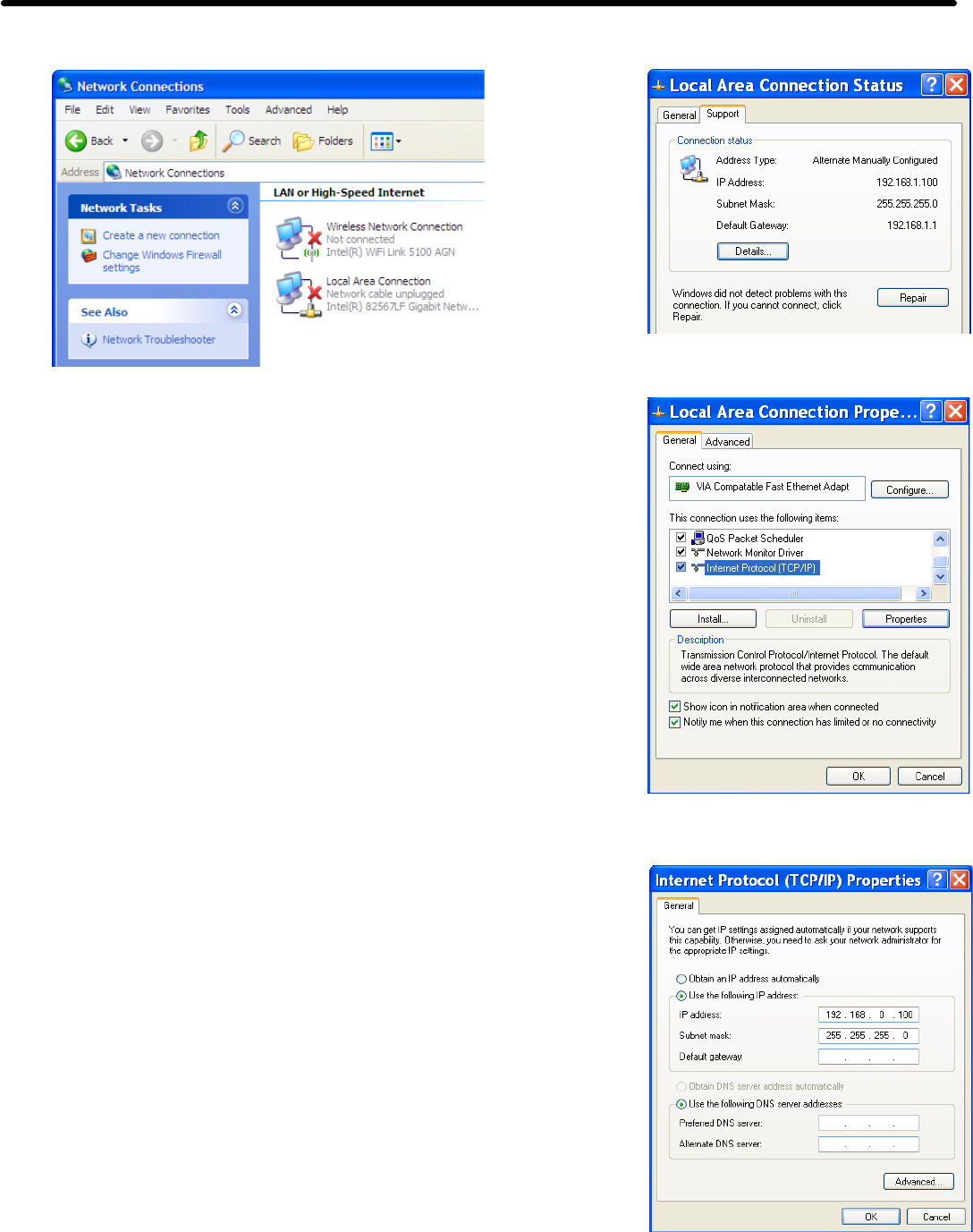
Pg. 3
Step 1: Connect a PC to a hub, switch, or router and verify the
computer’s IP address.
a. Open Control Panel and then open Network Connections,
(see Figure A above “Network Connections”) double click the
Local Area Connection (or Wireless Connection if using one)
to open the “Connection Status” window (see Figure B to the
right “Connection Status”)
b. Left click the Support tab and check the IP address for this
connection. If the IP address starts with 192.168.0 and the
subnet mask is 255.255.255.0 then skip to Step 2,
otherwise continue to step “c” following:
c. In the Connection Status window, left click the General tab and
then click the Properties button to open the “Connection
Properties” window (see Figure C to the right “Connection
Properties”)
d. Scroll down and left click the “Internet Protocol (TCP/IP)” line
and click the Properties button to open the Internet Protocol
TCP/IP Properties window (see Figure D to the right “Internet
Protocol TCP/IP Properties”)
e. Select the radial button „Use the following IP address‟ and then
type in the IP address 192.168.0.100 (the last number can be
any valid host address except 30) and change the subnet
mask to 255.255.255.0, then click OK in the Internet
Properties (TCP/IP) Properties window
f. Click OK in the Connection Properties window to accept these
changes. Verify the new settings have been applied by viewing
the Connection Status window‟s Support tab
The computer is now ready to setup each JKW-IP from the
factory default settings.
4 WINDOWS NETWORKING BASICS
Figure A: Network Connections in Control Panel
Figure B: Connection Status window
Figure C: Connection Properties
Figure D: TCP IP Properties
